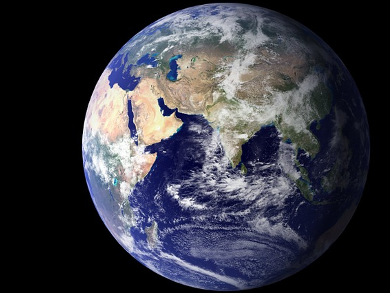The Earth’s core, 3000 km beneath its surface, mainly consists of a huge ball of liquid metal. Supposedly, hot buoyant rocks move several centimeters per year from the core to the surface carrying heat away from the core. This results in a very slow cooling of the core over geological time. The degree to which the Earth’s core has cooled since its formation, the exact chemical composition of the core, as well as what energy source sustains the Earth’s geomagnetic field are intensely debated questions amongst Earth scientists.
Kei Hirose, Tokyo Institute of Technology (Tokyo Tech), Japan, and colleagues used precision cut diamonds to squeeze tiny dust-sized samples to the same pressures that exist at the Earth’s core. They created high temperatures by heating the samples with a laser beam. The team performed experiments with a range of probable alloy compositions under a variety of conditions. The samples where then examined in an electron microscope.
The researchers found that small amounts of silicon and oxygen in the starting sample formed silicon dioxide crystals. Calculations showed that crystallization of silicon dioxide crystals from the core could provide an immense energy source for powering the Earth’s magnetic field. Crystallization changes the composition of the core by gradually removing dissolved silicon and oxygen over time. Eventually the process of crystallization will stop when the core runs out of either silicon or oxygen.
- Crystallization of silicon dioxide and compositional evolution of the Earth’s core,
Kei Hirose, Guillaume Morard, Ryosuke Sinmyo, Koichio Umemoto, John Hernlund, George Helffrich, Stéphane Labrosse,
Nature 2017.
DOI: 10.1038/nature21367
